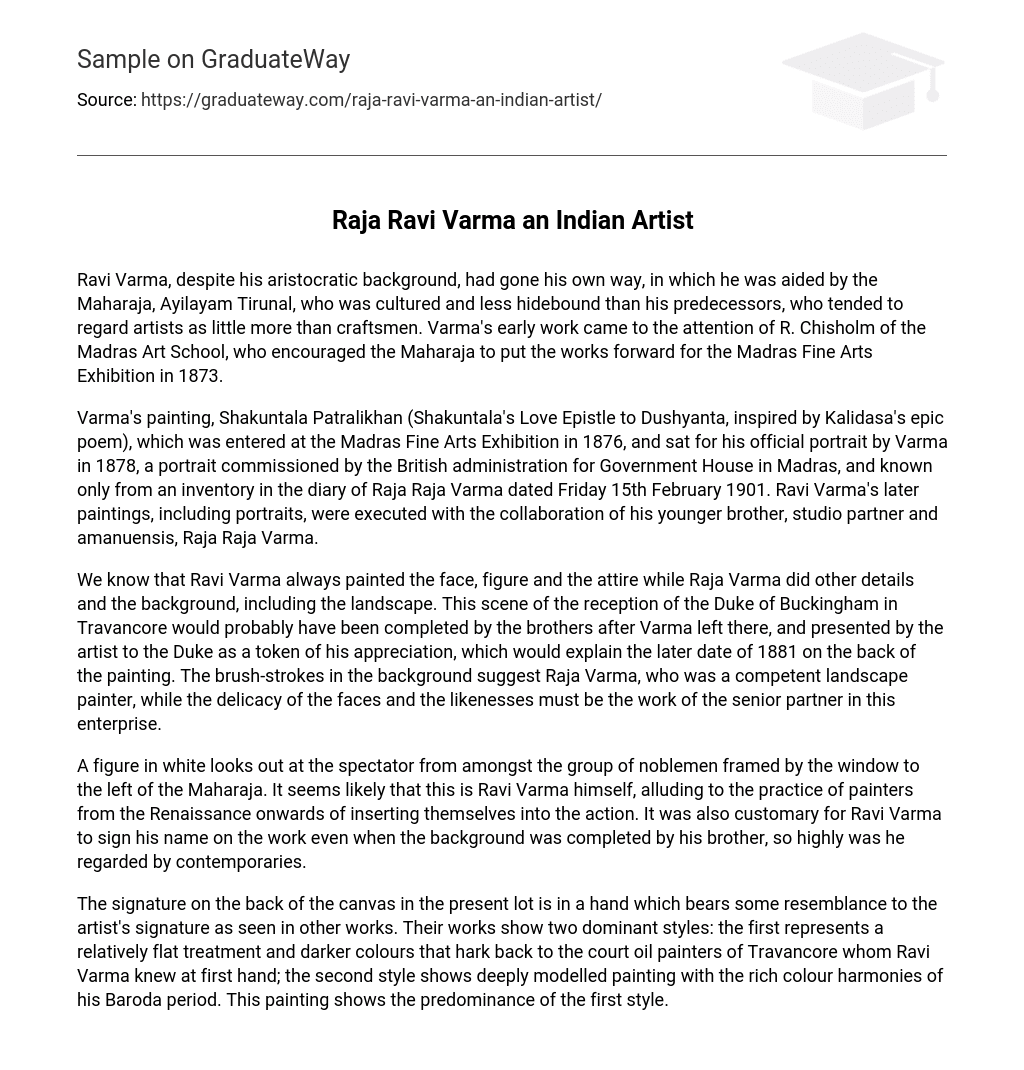Ravi Varma, despite his aristocratic background, had gone his own way, in which he was aided by the Maharaja, Ayilayam Tirunal, who was cultured and less hidebound than his predecessors, who tended to regard artists as little more than craftsmen. Varma’s early work came to the attention of R. Chisholm of the Madras Art School, who encouraged the Maharaja to put the works forward for the Madras Fine Arts Exhibition in 1873.
Varma’s painting, Shakuntala Patralikhan (Shakuntala’s Love Epistle to Dushyanta, inspired by Kalidasa’s epic poem), which was entered at the Madras Fine Arts Exhibition in 1876, and sat for his official portrait by Varma in 1878, a portrait commissioned by the British administration for Government House in Madras, and known only from an inventory in the diary of Raja Raja Varma dated Friday 15th February 1901. Ravi Varma’s later paintings, including portraits, were executed with the collaboration of his younger brother, studio partner and amanuensis, Raja Raja Varma.
We know that Ravi Varma always painted the face, figure and the attire while Raja Varma did other details and the background, including the landscape. This scene of the reception of the Duke of Buckingham in Travancore would probably have been completed by the brothers after Varma left there, and presented by the artist to the Duke as a token of his appreciation, which would explain the later date of 1881 on the back of the painting. The brush-strokes in the background suggest Raja Varma, who was a competent landscape painter, while the delicacy of the faces and the likenesses must be the work of the senior partner in this enterprise.
A figure in white looks out at the spectator from amongst the group of noblemen framed by the window to the left of the Maharaja. It seems likely that this is Ravi Varma himself, alluding to the practice of painters from the Renaissance onwards of inserting themselves into the action. It was also customary for Ravi Varma to sign his name on the work even when the background was completed by his brother, so highly was he regarded by contemporaries.
The signature on the back of the canvas in the present lot is in a hand which bears some resemblance to the artist’s signature as seen in other works. Their works show two dominant styles: the first represents a relatively flat treatment and darker colours that hark back to the court oil painters of Travancore whom Ravi Varma knew at first hand; the second style shows deeply modelled painting with the rich colour harmonies of his Baroda period. This painting shows the predominance of the first style.





